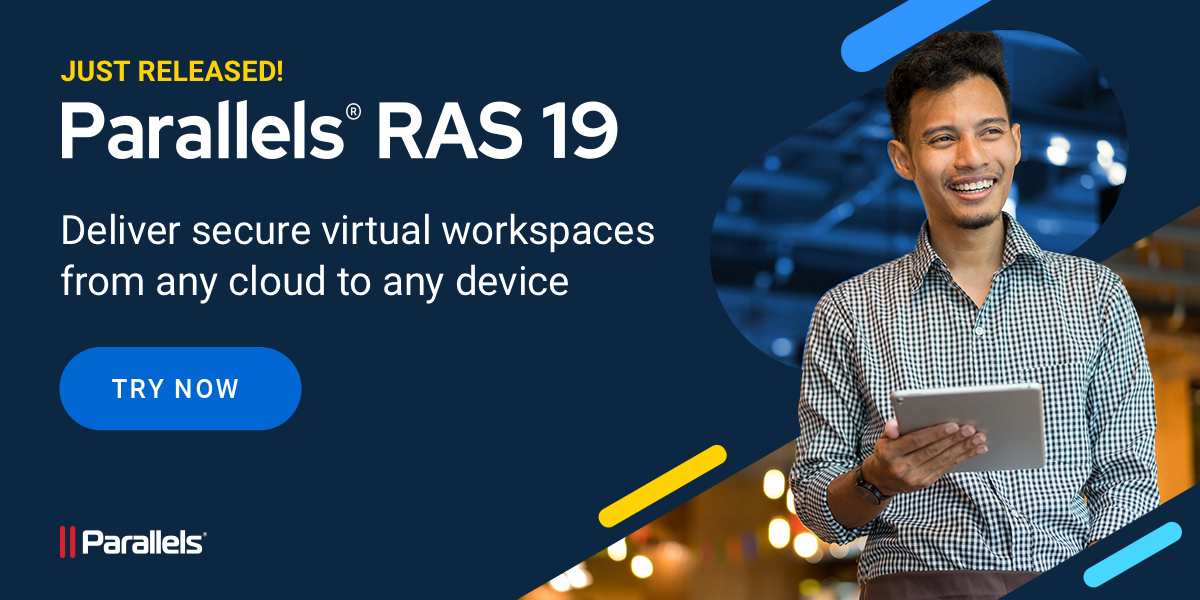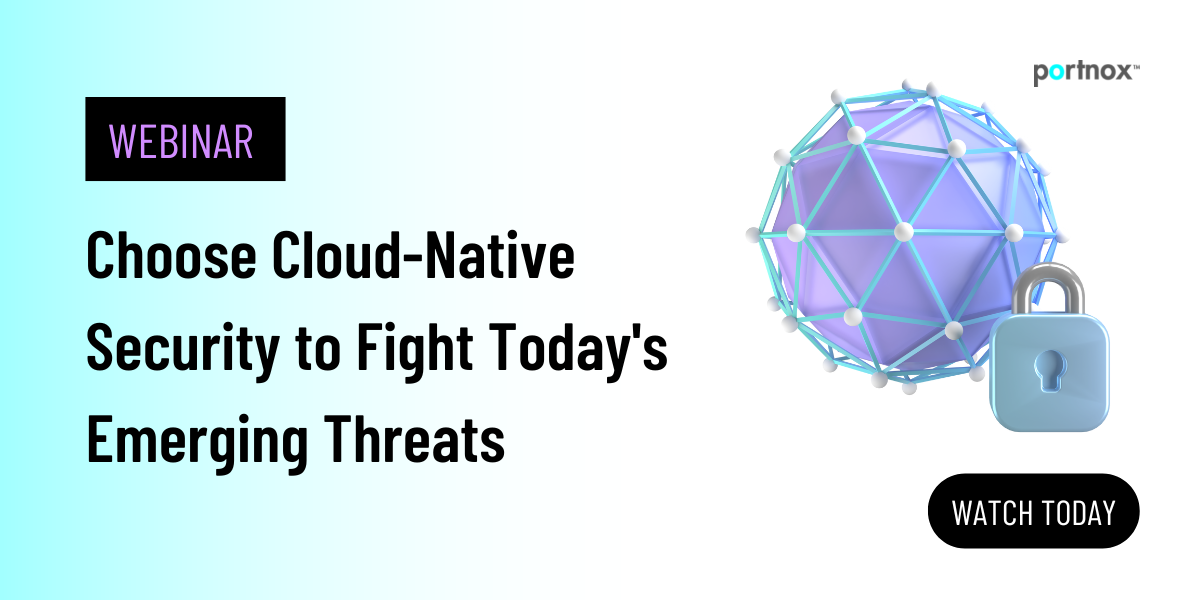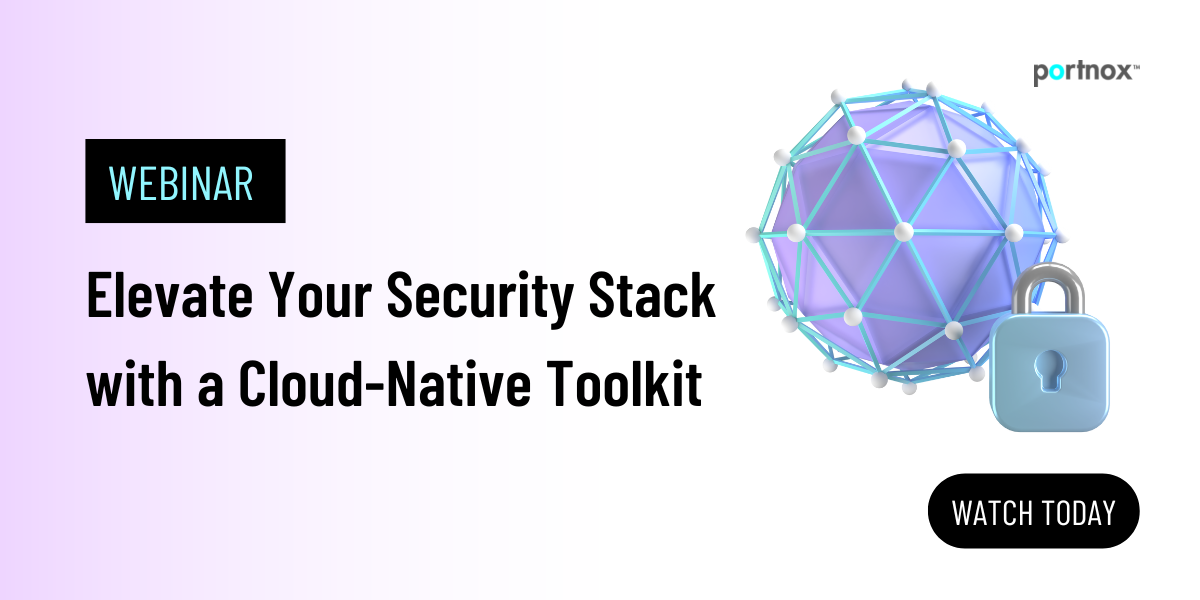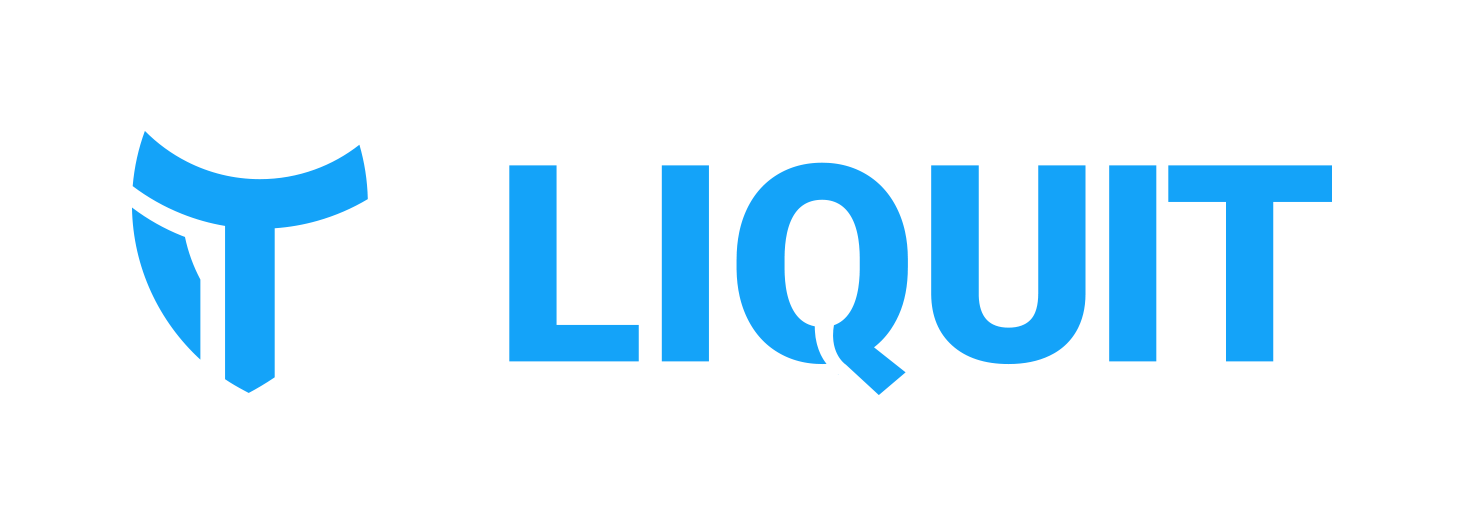VMblog: Can you provide a quick summary of Parallels RAS and how it has evolved since it was first launched?
Dennis Colar: Parallels® RAS has been on the market since 2014 and was originally launched by 2X Software. Today it is part of the Parallels brand, which includes a suite of top-rated accessibility solutions for businesses and individuals. Parallels was acquired by Alludo (formerly Corel Corporation) in December 2018.
Parallels RAS is a modern application delivery and virtual desktop infrastructure (VDI) solution that enables remote and hybrid work by providing secure access to business applications and desktops on any device or OS, from anywhere.
It gives organizations the flexibility to integrate with on-premises or cloud-based platforms, or a hybrid of both. Parallels RAS is simple to use for both end users and IT administrators, as it doesn't require complex or lengthy setup or specialized training.
Another unique feature is our pricing model: Parallels RAS offers a single, cost-effective license that includes all features right out of the box, which helps lower total cost of ownership (TCO) and lead to faster ROI.
On August 9 of this year, we released Parallels RAS 19. This latest version includes quite a few advanced technology and usability enhancements, including integration with Amazon Web Services (AWS), MSIX app attach integration, Let's Encrypt certificate management, multi-factor authentication (MFA) capabilities, and more.
In June of 2022, Alludo acquired Awingu, which is a browser-based workspace that allows users to securely access server-based legacy and SaaS apps, remote desktops and files on any device, anywhere.
This acquisition represents a major step toward building the future of work that acknowledges the realities of what companies are up against, where many rely on a mix of legacy applications, on-premises assets, hybrid architectures, and the cloud. We're all really excited about the capabilities that these two solutions together will be able to provide customers and partners with.
VMblog: What are the top benefits of Parallels RAS?
Colar: Parallels RAS is a modern VDI solution that enables 24/7 secure virtual access to business applications and desktops, on any device or OS.
You can create digital workspaces and centralize apps and desktops from local servers to clouds, including Amazon Web Services (AWS) and Microsoft Azure, and Parallels RAS extends the capabilities of Azure Virtual Desktop by integrating, configuring, and unifying all virtual workloads and resources.
Parallels RAS provides the flexibility to integrate with on-premises, cloud-based platforms, or a hybrid of both. Its centralized management console allows IT teams to enhance company data security and compliance across remote workforces with advanced access controls, multifactor authentication, encryption protocols and centralized monitoring.
Parallels RAS can also be quickly scaled to meet changing business needs, which helps organizations maintain business continuity. All these powerful features are included in a single, simple license model that keeps TCO low and time-to-value high once the solution is in place.
VMblog: What sets Parallels RAS apart from other virtualization/remote access solutions on the market?
Colar: At a high level, Parallels RAS offers a much simpler implementation and administration model than competitor solutions at a fraction of the cost, which lowers the barrier to entry for organizations seeking to modernize their workplace and IT infrastructure.
In a market where the most well-known vendors have a reputation for being expensive and complex to implement and manage, this simplicity can be a real game changer. That's why Parallels RAS is a consistent winner of top awards from trusted websites like G2 and TrustRadius in critical areas such as speed and ease of implementation and ease of use.
Going a bit further, Parallels RAS is built on a simplified architecture that makes it quick and easy to deploy (companies can be up and running in hours instead of days, weeks or months) and doesn't require specialized training for end users or IT teams.
It offers a single centralized management console that enables IT administrators to quickly and easily deploy applications and desktops to individual users or entire teams, set and manage granular user permissions, and more.
Parallels RAS also provides the flexibility that today's organizations need to integrate with on-premises or cloud-based platforms, or a combination of both.
Perhaps most importantly, Parallels RAS is extremely cost-effective thanks to its all-in-one licensing model, which includes the entire solution feature set right out of the box, with no hidden fees or add-ons. This saves companies from spending valuable time deciding between different license models and feature sets only to have to upgrade to a new model a few years later.
And make no mistake: The Parallels RAS feature set packs a punch. Out of the box capabilities application and desktop delivery including VDI, load balancing, integration with Azure Virtual Desktop, and support for different hypervisors including VMware ESXI, just to name a few.
VMblog: Has the rise in remote and hybrid work increased the demand for virtualization and/or cloud computing solutions? How does Parallels RAS help meet this demand?
Colar: Demand has certainly spiked across certain industries. With the increase in distributed workforces, moving to the cloud can be an attractive option for companies that want to standardize their solutions to make it easier on their IT teams and eliminate and/or integrate redundant technology. But making this shift all at once can be costly and harm productivity, which means you need a solution that enables you to do it in phases.
Other companies have invested a lot of money in legacy hardware they want to prolong the use of or may rely on highly customized on-premises solutions that would be costly and incredibly time-consuming to move away from, such as healthcare organizations and government agencies.
Regardless of what challenges organizations are facing, Parallels RAS provides a solution by providing teams with easy access to the desktops and/or applications they need. And it does so while providing a high-performance, intuitive end user experience, which enables workforce mobility while maintaining or even increasing productivity.
Employees today want to access data and applications through whatever device or OS they prefer. And it's usually more than just one: on average, employees today use 2.5 devices for work. Parallels RAS can keep your workforce happy and engaged-and help attract new talent-by allowing you to create flexible BYOD policies that enable the use of multiple devices for work without compromising data security.
VMblog: "The cloud" is now often referred to using terms such as public, private, hybrid, or multi. What sets these versions apart, and how does Parallels RAS support them?
Colar: Cloud technology can provide benefits such as flexibility, scalability, reduced risk of data loss, lower costs (compared to on-premises solutions), as well as added benefits such as reduced carbon emissions, which can help companies advance green IT initiatives. These terms simply refer to the different types of cloud environments that have emerged to meet the many different needs of organizations.
Parallels RAS can support all cloud environments. It's multi-cloud ready, which allows organizations to deploy apps and desktops on multiple cloud computing services, which includes deep integration with Microsoft Azure, Amazon Web Services (AWS), and Google Cloud Platform (GCP).
A VDI solution like Parallels RAS is often necessary to enable a shift to the cloud or enable Desktop as a Service (DaaS) or Software as a Service (Saas), especially for companies in industries that may not be able to use the public cloud due to security concerns or compliance with industry-specific regulations (e.g., HIPAA for healthcare organizations). Parallels RAS provides companies with the flexibility to easily use private, public, hybrid, or multi-cloud solutions depending on their needs.
For example, you can use Parallels RAS in a private cloud by rolling it out on physical servers and virtual machines (VMs) and deploying and maintaining DaaS products, such as Azure Virtual Desktop. Managed service providers (MSPs) and independent software vendors (ISVs) can also use Parallels RAS to deliver their own DaaS and SaaS offerings.
For public clouds, Parallels RAS simplifies the delivery of virtual applications and desktops with built-in auto-scaling and load balancing capabilities.
Parallels RAS also helps organizations that need to blend the flexibility of the cloud with on-site data storage, which requires certain hybrid cloud scenarios. This includes using cloud services such as Azure Virtual Desktop with session hosts on Microsoft Azure, along with other multi-session hosts such as Remote Desktop Session Hosts (RDSHs) or single session hosts, such as VDI on-premises.
VMblog: How does Parallels RAS enhance data security?
Colar: Data security is top of mind for most organizations today. That's why Parallels RAS provides multiple technology and features to keep organizations safe. All company data is housed in a central datacenter and can only be accessed by users through secure methods, which helps prevent data leakage.
This makes Parallels RAS ideal not only for remote and hybrid teams, but also for companies that work with contractors, third-party vendors that require system access, and similar use cases.
IT administrators can use granular security policies in Parallels RAS to block certain user actions and provide different access levels to specific users via secure gateways that can be based on user or device conditions, such user location or device OS.
Two-factor authentication (also known as multi-factor authentication, or MFA), increases security by providing a second layer of protection against unauthorized access, fraud, and identity theft. It also enables organizations to meet regulatory compliance standards that are required in industries such as healthcare, finance, government, and military/defense.
Parallels RAS supports various MFA providers using the internet protocol known as Remote Authentication Dial-In User Service, or RADIUS, and time-based onetime passwords (TOTP), such as those provided by the Google Authenticator and Microsoft Authenticator apps.
VMblog: How does Parallels RAS protect data if a user loses their connection?
Colar: All data and applications accessed via Parallels RAS is stored in a centralized datacenter, so if your endpoint device or computer loses connection to the solution, your data remains secure. User sessions are kept active in this datacenter, without any data loss, until company policy dictates a log off for each user session.
This centralized location also enables employees to pause work on one device and simply pick up where they left off on another device, which is extremely useful for companies that have hybrid workforces. It also enables employees to get work done from anywhere, whether they're at home or stuck in an airport or waiting room and need to knock out a quick task.
VMblog: "Zero trust" is a security term we're hearing a lot about right now. How does it relate to Parallels RAS?
Colar: Zero trust is a security approach that requires all users to be authenticated, authorized, and validated, whether they're part of your organization or not. It's become increasingly popular as teams have dispersed, leaving companies with less control over their data.
Parallels RAS enables zero trust network access (ZTNA), which is a collection of controls that restrict remote access to resources based on certain policies (e.g., user identity, location, device security).
When access is granted, it's governed by the common security best practice known as principle of least privilege, or POLP, with advanced permission filtering. This limits access to only those resources needed to execute a specific task or action, which are typically applications and/or data.
With Parallels RAS, IT administrators can also restrict or secure access using expression-based rules, which can apply extremely granular criteria such as user, group, media access control (MAC) address, internet protocol (IP) address, and gateway.
It's important to mention Awingu here, which is a solution that Alludo acquired and added to the Parallels portfolio in June 2022. Alludo enables zero trust security in multiple ways, including default MFA, context-aware restrictions, no local data stored on devices, full usage audits, granuar usage controls, and encryption over HTTPS.
VMblog: What is the difference between Parallels RAS and a VPN?
Colar: Virtual private networks, or VPNs, are remote access tools commonly used in the past. While they do provide a certain level of security, they can be problematic and frustrating from a user experience standpoint, since they rely on client hardware and connection speed.
VPNs also do not provide the same level of security and stability as VDI. If a user endpoint device that uses a VPN is lost or stolen, the security of any information on that device is compromised.
In comparison, Parallels RAS is an all-in-one VDI solution that does not rely on the capabilities of end user hardware or connections because it provides secure access to any device with an internet connection. Since Parallels RAS is deployed on a centralized server rather than the end user device, employees can use a vast range of hardware to access virtual desktops and applications, including thin clients, legacy machines, and smartphones.
It also provides the ability to carry out conditional access, where the level of security can be controlled depending on the user environment, location, device used, etc.
Awingu's remote access technology acts as a VPN alternative by leveraging a comprehensive, browser-based, "clientless" approach to enable secure access to applications, desktops, and files from any device, anywhere. Since no agents must be installed, Awingu is a lightweight application that's easy to deploy and configure.
Together, Parallels RAS and Awingu are a powerful combination that can enable organizations to create fully remote workforces, implement BYOD policies, and easily meet an organization's need for virtual desktops and applications-all while providing seamless cross platform functionality, simple and streamlined implementation, and impressive security.
VMblog: What is the difference between Parallels RAS and Microsoft RDS?
Colar: Parallels RAS is a complete solution that enables organizations to create secure digital workspaces that enhance the capabilities of Microsoft Remote Desktop Services (RDS).
Parallels RAS uses Microsoft Remote Desktop Protocol (RDP) to allow users to access applications and desktops remotely. In addition, Parallels RAS includes a full set of advanced features and technology integrations that add capabilities on top of the native RDS experience to help reduce complexity and streamline installation and deployment, as one example.
Security is also a major focus, and Parallels RAS offers the ability to tunnel the RDP traffic through its own secure gateways without exposing the encrypted RDP traffic. It also enables MFA, granular security policies, access control and more.
VMblog: What devices and OSes are supported by Parallels RAS?
Colar: One of the greatest benefits of Parallels RAS is that it supports an incredibly wide range of different operations systems and endpoint devices to make access as easy as possible.
Parallels RAS 19 supports Windows 2008R2 all the way up to Windows Server 2022 and Windows 7 up to Windows 11 to host user applications and desktops all in a single Parallels RAS site. This allows organizations to update and migrate to new platforms at their own speed while still benefiting from new features and security updates.
End point devices can access Parallels RAS via Windows, macOS, Linux, Android, Chrome OS, and iOS/iPadOS with native clients. Web clients can also be used to enable browser-based access to applications via Parallels RAS. And this support is all available out of the box-no extra fees or add-ons required.
VMblog: How does Parallels RAS licensing work?
Colar: Parallels RAS offers a single licensing model that encompasses the entire feature set. All subscriptions come with 24/7 support, access to live and on-demand training, and much more.
For MSPs and ISVs, Parallels RAS offers pay-as-you-go pricing, with monthly billing for concurrent users after actual usage, automated usage reports, and access to our knowledge base and training materials.
We encourage anyone who wants to learn more to speak to one of our experts about how Parallels RAS can best meet your company's unique needs and how we can tailor pricing to your budget.


















